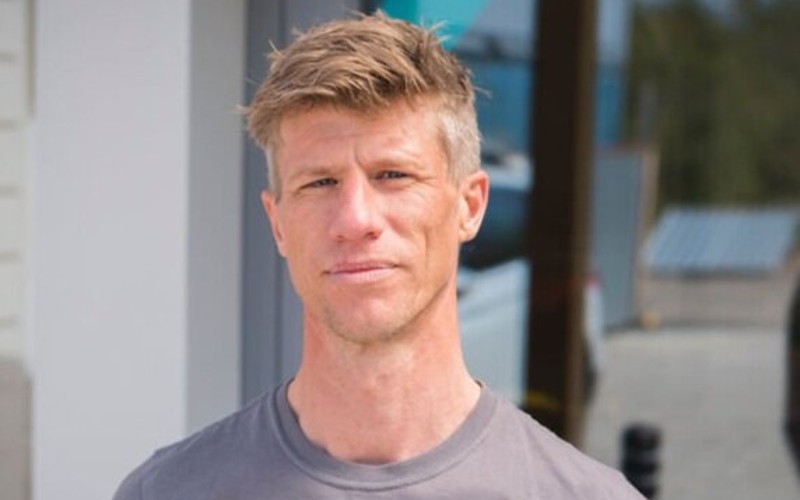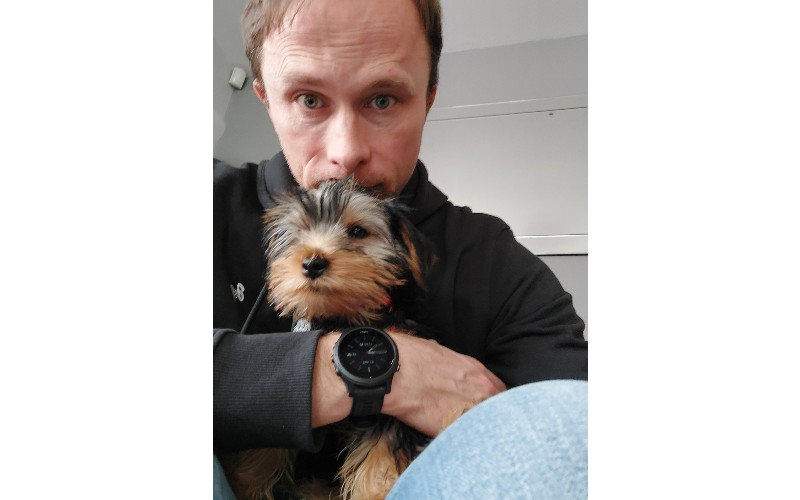You can read the first six weeks of Jonathan’s marathon training journey via links further down.
My uncle – Barnsley born and bred – once pulled an 18-year-old me up from some Florida turf by the collar.
“Show some Yorkshire grit, lad!”
It was humid as hell and must have been 30 degrees. I thought I was dying. Yet this 40-something nutcase hounded the Mexican lads we were kicking about without pause – except to deliver his searing admonishment.
He was trying to help his nephew – at a key moment in his mental development – understand that failure is not an option. ‘Go hard or go home’, as it would later be coined. But is it good advice for a marathon?
Nope.
“Listen to your body!” Paul Coker (below), owner and lead therapist at Move Physio and a NuroKor ambassador, advises. “More than your smartwatch or running coach; more than your friends at run club or strong opinions on the internet. (And definitely more than a Yorkshire uncle.)
“Develop an understanding of how your unique body responds to running, listen to any tight spots and niggles that appear during or after running. Getting a bit tight and sore when you first start running or increasing mileage is fairly common and not necessarily a reason for panic. The trick is getting the balance right: don’t make mountains out of molehills, but don’t ignore gradually worsening pain and injury.”

Coker should know: he has treated thousands of runners, from beginner to elite level, and is also an experienced Ultra trail runner – which involves distances often far greater than a marathon.
He says you should deal with issues early. “Many of the most common injuries that bring marathon runners to a halt in training aren’t structural damage to tissue – spraining an ankle or breaking a bone – but rather sore spots developing in places like the Achilles tendon, outer knee or lower back and hip area. When pain gradually develops in these areas, think of them as overload – inflammation and sensitivity resulting from the repetitive impact forces involved in running.
‘Don’t be an idiot’
“This has a couple of implications; pain is often only present at the start of runs and/or in the days and hours after running. This means many people continue to run for weeks despite a gradually worsening issue.
“Don’t be that idiot who is a slave to the training programme, ignoring a problem until it stops you completely. Far more people fail to start or finish their marathon due to a pain problem than due to a lack of fitness having not done enough training miles.”
He adds: “If you are getting sore, find your best local therapist with an interest in running – they will help you adjust the dials of training and get you on an appropriate rehab plan. Way too many runners wait too long before seeking help. Rest and wishful thinking don’t fix many running niggles.”
The repetitive impact, especially on roads and pavements, has always put me off running more than three times a week. When I lived in Sandhurst a decade ago, a neighbour with shot knees told me that he’d completed 36 marathons in his life.
A sensible approach, it seems. “Don’t just run!” says Coker. “As wonderful and joyful as running is as a form of exercise, it is also heavy on impact, highly repetitive, hard on your legs but pretty easy on your spine and arms. So just running is never really the smartest plan.
“A couple of non-running exercise sessions a week are a great idea. Research has shown leg strengthening exercises like calf raises, bridges and squats can reduce running-related injuries by half. Gyms are optional for this; there are plenty of great ways to get strong using just your body weight. Don’t believe the hype that runners rarely need to focus on core stability exercises.”
Trying to force a change in running style, for example to be more efficient, has been shown to increase rates of injury. “Don’t overthink it,” says Coker. “And don’t try to hold tension in, or focus on feeling contraction of, any particular muscles – that can only ever make you less efficient.
“Good running is all about efficient impact absorption – so focus on running smoothly and quietly, with both legs doing roughly the same thing and the spine being tall but relaxed. This is probably the best piece of universal advice I can give.”
From Broadmoor to Bacup
I didn’t give much thought to my running technique on my long run last Sunday morning. At my brother-in-law’s for the weekend – coincidentally just down the road from Sandhurst – I was up at 6am, downing orange juice with a banana, to drive out to a 13-mile woodland course downloaded from my new bible plotaroute.com.
A couple of miles in, disaster struck – the Garmin went into battery saver mode! How had I forgotten to charge it? The GPS now unavailable – and my phone back in the car – I kept track of landmarks (bizarrely, one was a back gate for Broadmoor) so I could retrace my steps. The trouble is, things look completely different in reverse… but I did, with a couple of missteps, manage to find my way back to the car.
Deciding to squeeze in a couple more miles on the adjacent nature reserve – Wildmoor Heath – I came upon my old running route from a decade before! I would happily have made up the 13 miles in this more familiar terrain, but I’d lost too much time – we had to get back up t’Lancashire to pick up a puppy – so I had to make do with a loop of the marshland boardwalk.
Our new Yorkshire terrier, Fifi, is only four months old but is already outpacing me on walkies – ears pinned back by the wind as she flies up the bridle path. The kids – and even my dog-hating wife – are in love. She’s even tried to make friends with the cats!
She’d be perfect if it wasn’t for the constant whimpering and barking for attention at night… I’ve not been this underslept for years.
Coker wouldn’t approve. “How much fitness you actually gain from running has as much to do with recovery as it does the run itself. Make sure you are taking care of the basics: get plenty of sleep, eat and hydrate well particularly in the hours and days after your long run.”
He adds: “There is also some evidence that compression garments or kinesiology tape worn in recovery do help a little. Bioelectrical devices, like NuroKor’s Mitouch, that deliver microcurrents can significantly accelerate your muscles’ healing and recovery – it’s looking like this tech will be the next big thing in the recovery gadget market.”
Over the next few weeks this column will include advice from experts in areas such as nutrition, training performance and psychology – and naturally tech will be running through it all. If you have an anecdotal or expert contribution to make – or know someone who does – get in touch at [email protected].
You can sponsor Jonathan’s London Marathon run, supporting his chosen charity DEBRA, at this page.

